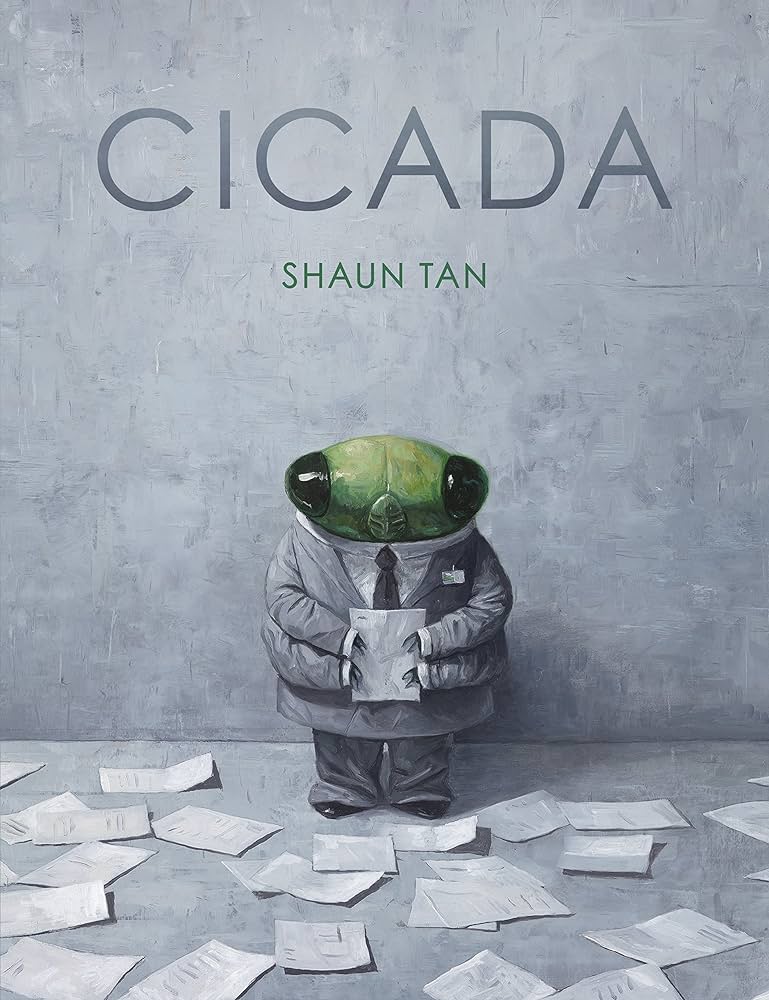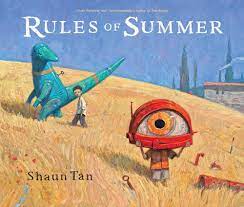

A Cicada works hard at his thankless job. He stays late, finishes other people’s work, and after 17 years of enduring the abuse, decides it’s time for a change.
Cicada is easily Tan’s most polemic work and a masterpiece of satire. There is a directness to the writing and illustrations, a tonal simplicity that makes clear Tan’s critique of the treatment of migrant workers in the corporate setting. It’s funny, bleak, and, in the words of the Cicada himself, “Story good, story simple, story even humans can understand.”

With no text and only images, The Arrival follows an immigrant man’s odyssey through a surreal and fantastic world in search of a better life for his family.
Beautifully conceived and masterfully executed, The Arrival is singular in its depiction of the migrant experience. Tan places the reader in the shoes of the protagonist, and, instead of telling, Tan shows how bewildering, scary, and at times wonderful that experience can be. Few graphic novels successfully capture such universal truths. It has been twenty years since the publication of this book there still isn’t anything quite like it.

This book is Tan’s ode to brothers and the arbitrary rules that dictate childhood fun. The unforeseen consequences of breaking said rules are beautifully illustrated, capturing the subjectivity of a world that you don’t fully understand. Rules of Summer is like a surreal No, David!.

Originally published in Tales From Outer Suburbia, Tan’s 2008 collection of short stories, Eric is an incredibly touching story about a family’s experience with a foreign exchange student staying at their house.
Eric is my favorite of all Tan’s books because of its brevity. Where Cicada and The Arrival operate as a subjective allegory for the migrant experience, Eric’s story is objective, a lesson in
pluralism in just 15 pages. It is an amalgamation of all Tan’s ideas about the mysteries of life and being human. Much like Eric’s parting gift to the family, this book is a gift to readers of all ages.

Dog shows Tan at his most minimal illustration-wise while being as ambitious as The Arrival in its scope. It is an exercise in composition, chronicling the invisible bond between humans and dogs over a millennia through a series of evolving landscape paintings. I think Dog exhibits Tan’s tenacity for poetic simplicity and is surprisingly affecting because it is so understated. This is the author’s most recent release, and it shows that after two decades working in the medium, he’s just getting started.
Kasey Taylor, Pine Reads Review Writer